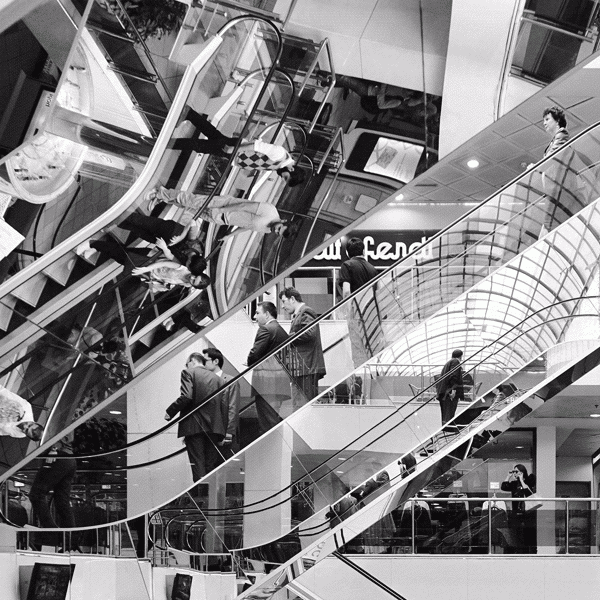‘Our only rule was very simple: no idea or image that might lend itself to a rational explanation of any kind would be accepted. We had to open all doors to the irrational and keep only those images that surprised us, without trying to explain why.’ So proclaimed Luis Buñuel (in his 1983 autobiography) of Un Chien Andalou (1929), which he and Salvador Dalí made when they were young and barely known. At the time, cinema was in its infancy and considered ‘low’ culture. Yet, or perhaps because of this, it was the perfect vehicle for realising the two artists’ surrealist vision and the disjointed pace of this new modernity.
Buñuel and Dalí collaborated on the script and then shot the film on a small budget. The resulting silent, black-and-white short, exemplary of the Dadaist spirit, influenced thinking in fields ranging from film aesthetics to psychoanalysis. It is therefore both fascinating and unsurprising that this group exhibition of works inspired by the film has resulted in some.strikingly varied artworks. Responding to its bizarre imagery and celebration of the irrational, 13 artists have created illustrations, paintings, sculptures and photography ranging from the slightly unnerving to the outright frightening. Our subconscious, luckily, remains as disturbing and creatively fertile as visionaries like Buñuel depicted it 86 years ago.
As with any large group exhibition, the relationship between one work and the next can be tenuous. Curatorial intervention is minimal at best, but as these are creative responses to a film that embraces nonlinear tempi and resists narrative, this does not necessarily make for an unsatisfactory experience. Instead, the viewer proceeds in a way that – fittingly – takes him or her to whatever catches the eye (unconsciously, again fittingly). The dreamlike pen drawings of Ceren Oykut grab attention for their intricate use of an overlooked and deceptively simple medium in The Trial (2015), a chaotically detailed drawing suggesting industrial encroachment and rural destruction – or perhaps simply a cluttered mind. Next one may latch upon Vault (2015) by Cem Dinlenmis¸, an acrylic-onwood painting of geometric shapes in gradations of grey, distributed with a sharp precision reminiscent of Malevich’s uncompromising square. Creating an illusion of depth that pulls the viewer into a dark, circular tunnel, it could both be a commuter’s banal daily impression of the underground and the dystopia of a subterranean urban future. Indeed, circularity, amorphousness, natural decay and machines can be found in many an artist’s response. Arguably the surrealist view of modernity triggers similar anxieties in us today; at least, the film itself still communicates its era’s collective preoccupations well beyond its time and place.
Photography, cinema’s foundation, is somewhat underrepresented in this selection. Maybe this is a reflection of our tendency to create directly from the imagination when we give our subconscious free rein, and nothing in our immediate surroundings is quite representative enough. However, the few photographs included in the exhibition showcase the surrealistic potential in a medium so singularly associated with the capture and analysis of reality. Ali Bilge Akkaya’s black-and-white 2A (2015) presents a familiar sight: the hard, shiny mirrors and hyper-lit surfaces of a shopping centre escalator. Yet captured, as here, from an angle of spatial disorientation, depth is flattened, up is down and nausea is our response. Works like Akkaya’s 2 and Bahadır Baruter’s digital monoprint Quo Vadis? (2015) deliver potential social and political context to the responses on display by drawing inspiration from the film’s stark visual aesthetics but choosing to critique subject matter a little closer to home. Quo Vadis?, though characteristically Dadaist in its depiction of two anthropomorphic characters, is all the more entertaining for those who recognise that their features are remarkably close to that of two Turkish politicians.
It’s almost a shame X-ist chose the slowest period of the Istanbul art calendar for this show, in which any doubts one may have as to whether a response to a single artwork produces unoriginal or creatively limited pieces are banished. With the abovementioned contemporary Turkish artists in particular being ones to watch, seeing them produce independent shows in the future would be an encouraging sign of the championing of homegrown talent.
This article was first published in the October 2015 issue.
